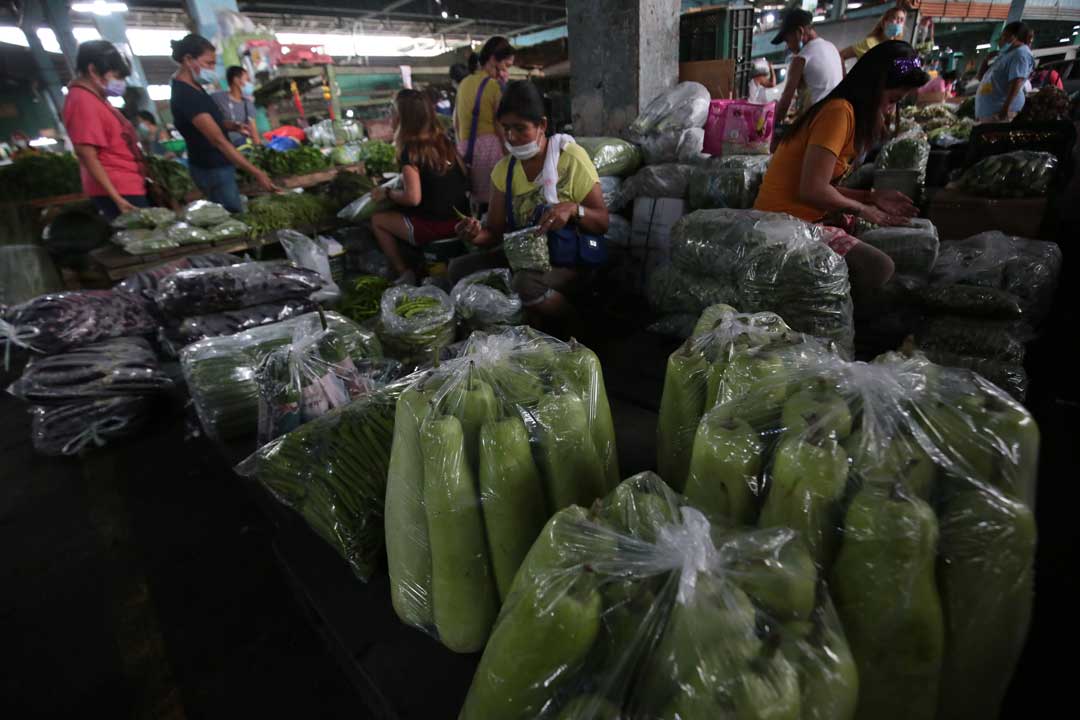
PRICE GROWTH of wholesale general goods for April was 8.3%, the highest level in almost 11 years amid robust demand and election spending, according to preliminary data from the Philippine Statistics Authority (PSA).
The rise in the general wholesale price index (GWPI) was stronger than the previous month’s gain of 7.6% and the year-earlier rise of 2.7%.
The April indicator was the highest reading in nearly 11 years since the 9.1% growth posted in September 2011.
In the four months to April, the GWPI averaged 6.6%, against 2.5% a year earlier.
The GWPI is used to monitor the wholesale trade sector and serves as a basis for price adjustments in business contracts and projects.
“Across the country, the faster growth pace in bulk prices was evident. This, I would attribute to the continued reopening of the economy, pent-up demand and, to a certain extent, election spending. It is fitting to note that higher prices of oil may have contributed as well to April GWPI rise,” Union Bank of the Philippines Chief Economist Ruben Carlo O. Asuncion said in an e-mail.
April was the second month in a row that the relatively permissive Alert Level 1 quarantine setting was in force over Metro Manila and other areas.
Less restrictive quarantine conditions allowed more economic activity. Similarly, national election preparations ramped up during the month before voters cast their ballots on May 9.
Candidates have yet to file their elections expenditure reports. Under election law and a Supreme Court ruling, candidates are required to file their Statement of Contributions and Expenditures. This year’s deadline is June 8. National candidates are allowed to spend up to P10 per registered voter.
The PSA said the acceleration in bulk prices during the month was led by food (9% in April from 8.2% in March), beverages and tobacco (6.5% from 4.0%), mineral fuels, lubricants and related materials (53.3% from 45.3%), manufactured goods classified chiefly by materials (7.8% from 7.3%), and miscellaneous manufactured articles (1.7% from 1.5%).
Mr. Asuncion also noted significant growth were seen in commodities in April, as mirrored in the S&P Global Philippines Manufacturing Purchasing Managers’ Index (PMI) reading that month.
The April manufacturing PMI of 54.3 was the highest in more than four years, or since the 54.8 in November 2018. A reading above 50 denotes an expansion; below 50 signals a contraction. The PMI is considered a leading indicator of future manufacturing activity because they reflect the extent to which manufacturers are ordering raw materials for processing.
Meanwhile, growth eased for crude materials, inedible except fuels (29.1% in April from 29.2% in March), chemicals including animal and vegetable oils and fats (8.4% from 8.5%), and machinery and transport equipment (1.7% from 2.4%).
Luzon’s GWPI rose by 8.8%, accelerating from 8.2% in March and the 2.8% posted a year earlier. Luzon price growth was the highest in 126 months or since the 9.3% growth posted in October 2011.
In the Visayas, the bulk prices rose by 4.3% from 4.1% the previous month, and higher than the 0.7% in April 2021. Price acceleration was the strongest since the 4.9% also seen in August 2011.
Mindanao’s GWPI grew by 3.3% in April from 3.0% in March. However, this was slower than the year-earlier 4.6%. The April reading was the highest since the 4.2% logged in January.
Mr. Asuncion sees the impact of pent-up demand and election spending to be temporary. He also expects “softer growth” for wholesale prices of general goods in the coming months. — Ana Olivia A. Tirona




